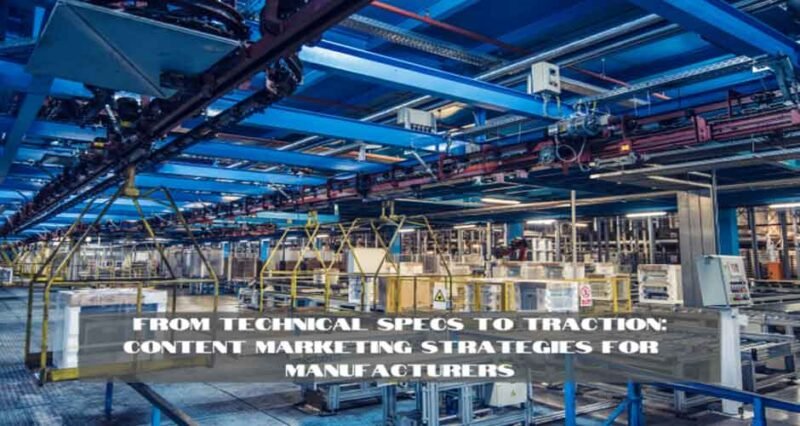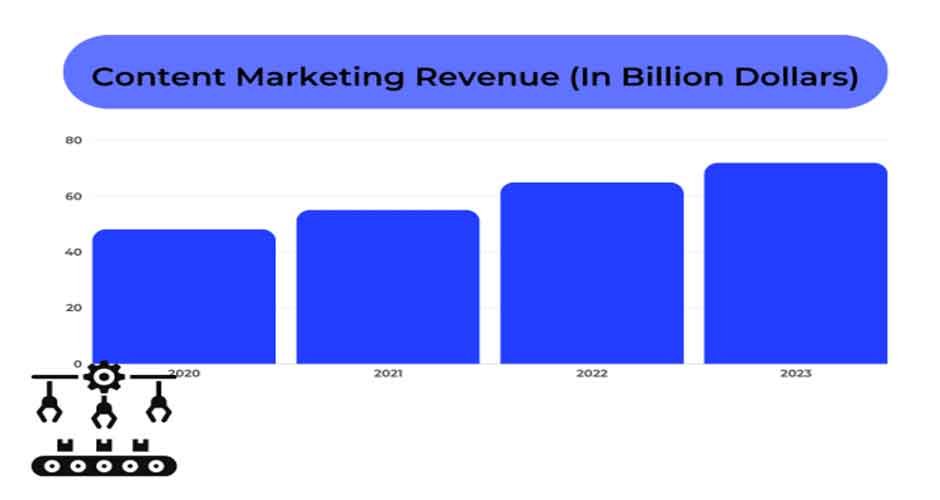
Content marketing has become an invaluable strategy for manufacturers to reach new customers, build brand awareness, and ultimately drive sales.However, creating content that resonates with audiences and achieves real traction can be a major challenge, especially when dealing with highly technical products. TThis article explores key techniques for transforming your manufacturing content from dry spec sheets into compelling stories that deliver results.
We’ll cover crucial topics such as understanding your audience, establishing thought leadership, focusing on customer needs, the power of storytelling, optimizing for search, repurposing content across multimedia formats, promotion and distribution tactics, and measuring ROI. Follow these content marketing best practices to build momentum for your manufacturing brand.
Understanding the Manufacturing Audience
In the dynamic landscape of the manufacturing industry, content marketing emerges as a powerful tool, but its effectiveness depends on a profound understanding of the unique needs and dynamics of the target audience.
To effectively harness the power of content marketing in the manufacturing industry, it’s crucial to understand the unique needs of our target audience. An effective manufacturing marketing agency that creates content serving this audience is essential.
Leveraging Thought Leadership
Now that we’ve acknowledged the importance of understanding our manufacturing audience, let’s explore a strategy that not only resonates with them but also establishes our authority within the industry. Thought leadership content that provides unique insights and expertise has an outsized impact.
Customer-Centric Content

Having emphasized the importance of thought leadership, let’s now shift our focus to another critical aspect of content marketing in manufacturing – creating customer-centric content that resonates with our audience. Listening attentively to our customers’ pain points through surveys, interviews, and feedback forums enables us to address their genuine needs in an impactful way.
Storytelling for Brand Building
But content marketing for manufacturers is not just about facts and figures. It’s also about crafting compelling narratives that draw our audience in. The power of storytelling applies even in a technical industry like manufacturing. Most consumers want ads that feel like a story, and brands employing storytelling enjoy a 20% increase in engagement. Crafting intriguing narratives around our products makes technical details more compelling, while also highlighting our brand values in an authentic way that resonates.
SEO and Content Optimization
Creating remarkable content is just the initial step. We must also ensure that it can be easily discovered by our ideal audience. Search engine optimization (SEO) maximizes content brand visibility through strategies like keyword optimization, metadata enhancements, backlink building, and site speed improvements. For manufacturers, getting SEO right is critical, allowing us to appear prominently in those buyer keyword searches referenced earlier. Driving more qualified traffic to our content raises visibility and achieves real traction.
Multimedia Content Strategies
The most effective manufacturing content leverages multiple formats like video, infographics, and interactive content for maximum impact across customer touchpoints. Video is especially key — 90% of customers say product videos are helpful in their purchasing decisions. Infographics also play a key role; content featuring infographics generates 3 times as many backlinks as content without them. By diversifying content formats, we achieve more eyeballs and engagement.
Distribution and Promotion
Creating remarkable, multimedia content is undoubtedly a crucial aspect of content marketing in the manufacturing industry. However, for this content to yield the desired impact, it must be paired with an effective distribution and promotion strategy.
Distribution and promotion form the bridge between your valuable manufacturing content and its intended audience. By diversifying channels, investing in paid advertising, fostering industry partnerships, optimizing for SEO, utilizing trackable links, and exploring webinars, your content gains visibility. When executed in collaboration with a manufacturing marketing agency, these strategies are positioned to enhance your brand’s presence and engagement within the competitive manufacturing landscape.
Measuring Traction and ROI
In the dynamic landscape of manufacturing content marketing, achieving meaningful traction and proving return on investment (ROI) requires a nuanced and strategic approach to measurement.
Effectively measuring traction and ROI in manufacturing content marketing requires a holistic approach that includes strategic KPIs, sales attribution, content performance analytics, audience engagement metrics, advanced analytics tools, and continuous optimization efforts. By aligning content goals with overarching business objectives, manufacturers can navigate the intricacies of content measurement and demonstrate its tangible impact on brand awareness, lead generation, and revenue growth within the competitive manufacturing landscape.
Frequently Asked Questions (FAQs)
How can manufacturers overcome the challenge of creating engaging content for a technical audience?
Focus on addressing specific customer pain points through benefited-driven messaging. Convert technical details into visual multimedia formats. Highlight customer success stories showcasing ROI. Feature contributions from engineering subject matter experts.
Is it necessary for manufacturers to invest in paid advertising alongside content marketing strategies?
Paid social campaigns and strategic ad partnerships can significantly amplify content reach, especially for complex or expensive products that have longer sales cycles. That said, always optimize organic, owned channels first before investing in paid promotion.
What are the best practices for repurposing existing technical content into engaging and shareable formats?
Take spec sheets and documentation and create compelling infographics, sizzle reels, and customer testimonials. Curate key statistics into authoritative blogs and LinkedIn articles. Extract quotable insights for social media snippets.
Final Takeaway
Embracing content marketing in the manufacturing sector goes beyond the conventional product-centric approach. To truly leverage its potential, manufacturers must pivot towards customer-focused narratives and multimedia content that not only educates but also engages their target audience.
Aligning your content with the needs of your buyers, establishing thought leadership, optimizing for search, diversifying content formats, and consistently promoting and measuring performance, you can propel your manufacturing brand into the spotlight. Transitioning from product-centric technical content to customer-focused storytelling creates opportunities for building meaningful connections and fostering brand loyalty in the competitive manufacturing landscape.
Content marketing offers manufacturers a significant opportunity to move beyond product-centric technical content to customer-focused stories and multimedia formats that educate and engage. By truly understanding buyer needs, practicing thought leadership, focusing on search optimization, diversifying content mediums, and relentlessly promoting and measuring content performance, manufacturers can gain serious traction for their brands and products.

